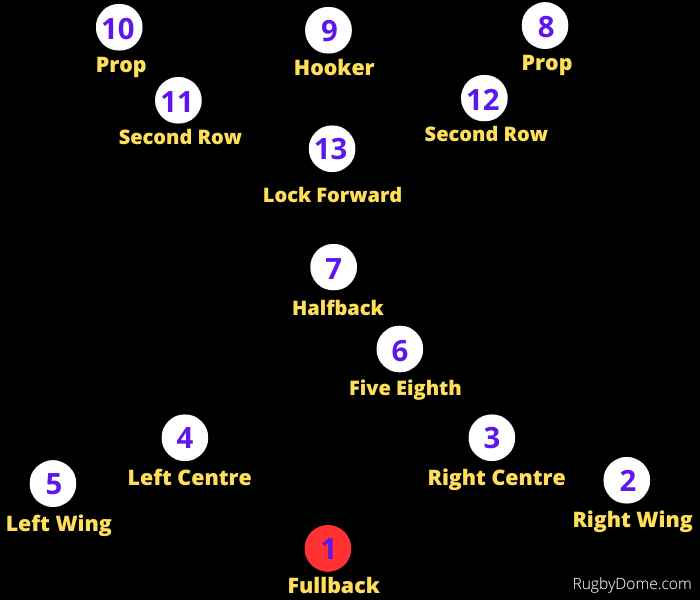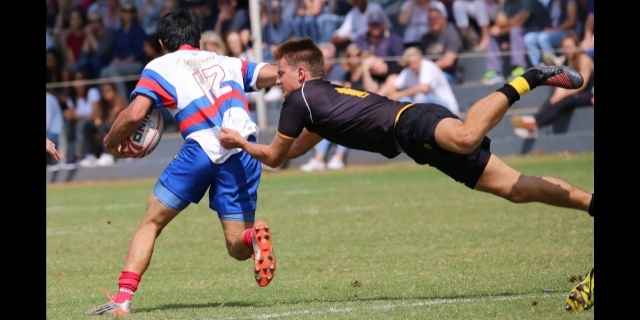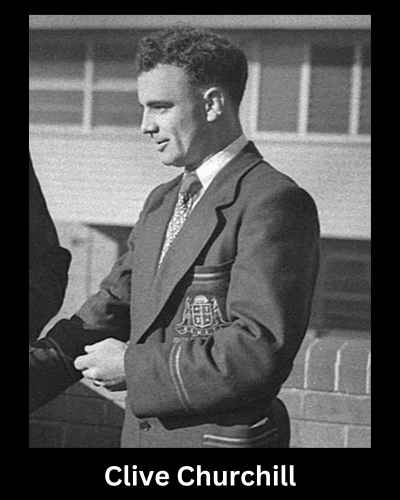Fullbacks in rugby league must have a mix of strong defensive and offensive skills.
They have the crucial role of organizing their team’s defensive structure on the field, while also making last-ditch tackles and catching high kicks.
In attack, they often provide the ”extra man” to create overlaps and exploit gaps.
This article looks in depth at the fullback’s role in rugby league.
We have a separate article on fullbacks in rugby union.
The Fullback Wears Number 1
Fullbacks are position number 1 in rugby league. They traditionally wear number 1 on their jerseys.
This number dates back to the early days of the sport when the fullback’s main role was to catch high kicks. Therefore, they positioned themselves behind their teammates.
I’ve marked the fullback in this position diagram in red:

As they were considered the last line of defense, they were allocated the number 1 jersey.
As the the sport developed, the fullback’s defensive role expanded into leadership of the defense. Similarly, they became highly important in attack.
Strategically, the “spine” of a league team is a small group of positions that take on the primary play-making role in attack and the controlling role in defense.
The fullback is one of four positions in the spine. They are joined by the halfback, the hooker, and the lock forward.
Role Of The Number 1 In Defence
The fullback is usually positioned at the back of the defensive line.
Fullbacks are responsible for organizing the defensive structure, making tackles, and catching high kicks.
Organizing The Defense
Because of their positioning, fullbacks have the best view of the opposition’s attacking plays. Their role is to communicate with the other defenders.
They call out the defensive structure, which means telling other players where they should be positioned on the field.
As play unfolds, the fullback must constantly scan and track what the opposition is doing. Fullbacks react by yelling instructions to players to move up or drop back in defense.
The fullback also calls out adjustments to the defensive structure when necessary.
For example, if the defense is struggling to deal with a particular attacking play, the fullback may call for a change in the structure to counter their tactics.
Covering gaps and making tackles
When the opposition are attacking, they are trying to create gaps in a team’s defensive line.
They run decoy plays to pull defenders out of position. Opponents who use quick passing and offloading can make the defense lose alignment.
The fullback is responsible for covering for their teammates. They must move quickly into position to close the gap and prevent the opposition from exploiting it.
But league would be a boring game if teams never exploited a gap. If an opposition player breaks through, the fullback is the last line of defense.
They must make their tackles, often sprinting to to bring down attackers side-on or from behind.

Catching high kicks
As fullbacks are behind their teammates, they are often the best positioned to catch a long high kick heading close to the team’s try line.
Fielding kicks is an essential part of the defensive strategy as it prevents the opposition from gaining territorial advantage.
High kicks are also called bombs. So, you’ll hear commentators praising fullbacks for defusing a bomb when they catch and secure a high ball.
If you want to learn more, check out our in-depth article on high kicks in league.
Role Of The Fullback In Attack
At the start of an attack play, fullbacks are usually positioned at the back of the attacking line. They are responsible for:
- supporting the ball carrier
- creating overlaps
- setting up subsequent attacking plays
When a team mate is advancing with the ball, the fullback will run up in support of the player. This creates an option for a pass or an offload.
Speed and agility are crucial in this role as they need to be able to get into position quickly and make themselves available to receive the ball.
The fullback is also responsible for creating overlaps in the attacking line. By positioning themselves correctly, the fullback can create an extra attacking option.
The fullback’s ability to read the game and anticipate where the ball is going to go is essential.
Their third role in attack is to set up attacking plays. This can involve:
- running into space to receive a pass
- kicking the ball into space to create a scoring opportunity
- making a break and running with the ball themselves
Passing, kicking, and running skills are essential here.
Clive Churchill: All-Time Great

It’s hard to pick the greatest rugby league fullback of all time.
But Australia’s Clive Churchill would make most people’s shortlists. His playing era was the 1950s.
Churchill played mostly for the South Sydney Rabbitohs, where he won five premierships as the star player. He went on to coach his beloved club to three more titles.
It’s a testament to his legacy that the man-of-the-match award in the NRL Grand Final is called after him.
In defense, Churchill was known for his low and hard tackling technique that drove ball-carriers to the ground. But the man known as the “little master” delighted the crowds with his gifted attacking play.